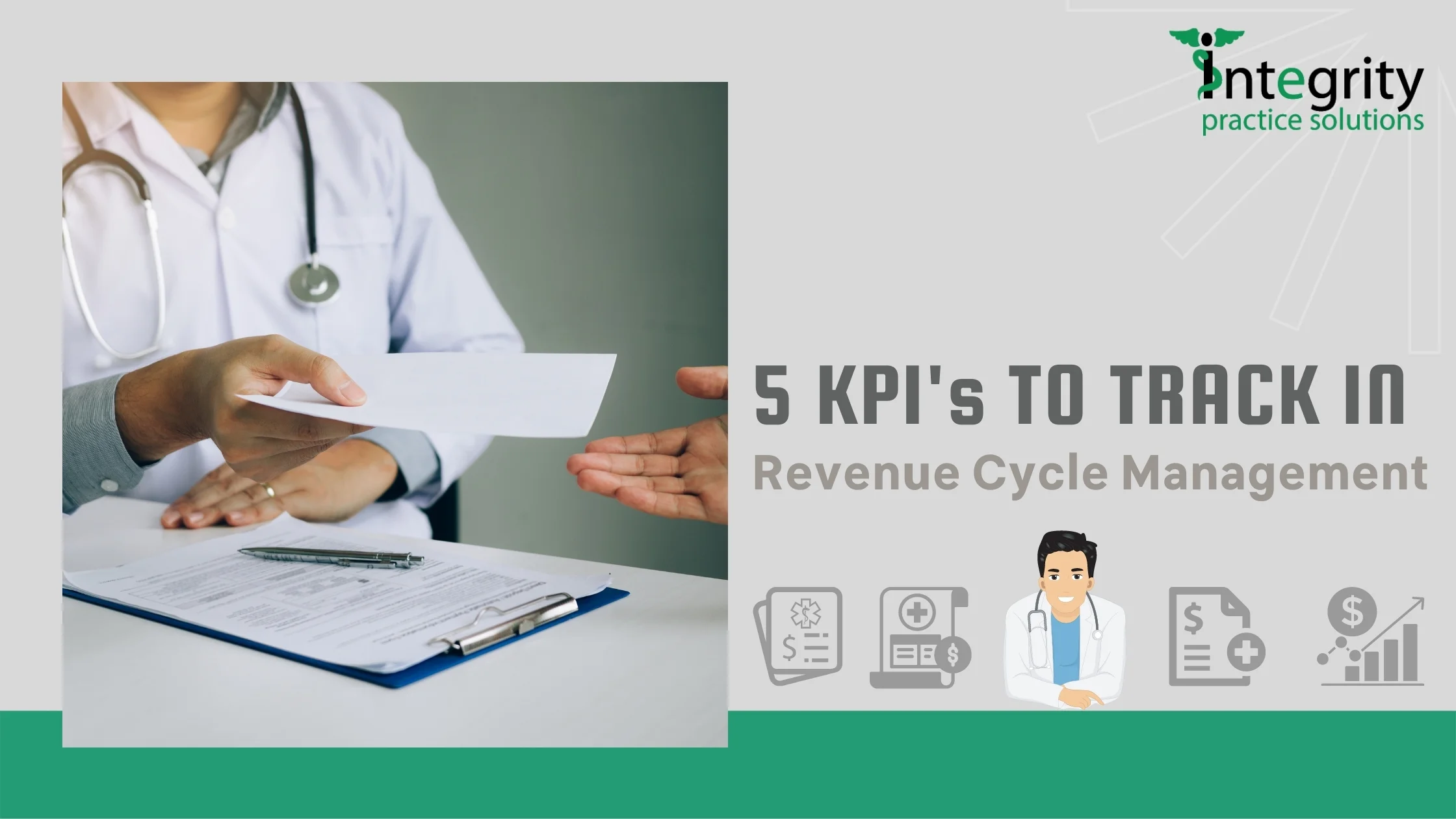
5 KPI’s To Track in Revenue Cycle Management
Revenue Cycle Management (RCM) lifecycle runs from Patient Insurance Verification to Reporting. It thoroughly covers each aspect of Medical Billing making sure our providers get paid appropriately on every claim.
KPIs in Revenue Cycle Management play a vital role, as they help guide data-driven decision-making and creating business transformation projects. RCM KPIs enable benchmarking of revenue cycle performance with industry peers on patient access team responsiveness, quality of clinical documentation, cash cycle efficiency, and guideline compliance. While there are hundreds of industry-standard metrics available, the HFMA defines 29 standard metrics, and we’ve chosen 5 of the key metrics to highlight in this article.
If you run a medical practice, adhering to the 5 KPIs listed below allows you to keep tabs on your revenue cycle. By measuring and tracking these KPIs, you’ll be able to get the most out of your revenue cycle and find the money you need to invest in technology and patient care.
Place of Service Collections(POS)
The HFMA defines POS collections as cash collected by the provider before, at the time of service, or up to seven days after discharge. Point-of-sale revenue also includes automatic payments and co-payments. To arrive at a value for this KPI, divide the POS payments by the self-payment receipt.
POS cash flow metering allows you to monitor the efficiency of POS systems or personnel accounting for the POS. It can also help identify and resolve the essential point-of-sale issues affecting the overall RCM process.
Error-Free Claim Rate
The error-free claim rate is the percentage of insurance claims that were successfully filed and reimbursed the first time at the time of submission. A high error-free claim rate means that the time spent in AR and the time taken by the supplier to obtain compensation reduces drastically. When the complaints are kept unresolved in the initial phase, it creates rework and high costs for the Doctor and the patient.
Measuring the Error-Free Claim rate allows healthcare facilities to monitor the effectiveness of the Claim submission process by calculating the average time and cost of reprocessing a complaint.
Days in AR
The MGMA provides a reference point of fewer than 40 days for days in AR. This KPI helps you identify the average duration you need for your team or payment collection system for the services offered:
- Calculate Average Daily Expenses – Add up the daily expenses for the past few months and divide the amount by the total number of days in the chosen period.
- Divide the total credits by the calculated average daily spend.
Denial Rate
To calculate the claim rejection rate, divide the total amount of claims rejected by payors by the amount submitted during the specified period. A rejection rate of between 5% and 10% is acceptable, while a rejection rate of less than 5% indicates a healthy revenue cycle and cash flow management process. If you think your rejection rate is over 10%, you should look at the eligibility check, coding, and credentials features.
Revenue Per Visit
Revenue per Visit can be defined and calculated by dividing the net collections by the number of patient visits in a given month. This metric can provide a quick snapshot of the health of the income cycle.
Running a financially successful practice requires an excellent back-office team, cutting-edge technology, and diligent attention to revenue and reimbursement rates. Partnering with RCM experts such as Integrity Practice Solutions puts you on the path to financial success as we help bring data-driven revenue cycle professionals and world-class technology to improve your earnings. Talk to us to see how we can help you with a robust Revenue Cycle Management system.
Please call us at +1 844 245 5633 or fill out the form below to Book an Appointment with us.
Recent Posts

September 29, 2021



















